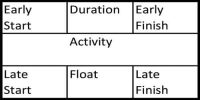Strategic evaluation and control can be defined as the process of determining the effectiveness of a given strategy in achieving the organizational objectives and taking corrective action wherever required. Actually, it is a system of monitoring, supervision, and follow-up. The fundamental strategy evaluation and control activities are: reviewing internal and external factors that are the bases for current strategies, measuring performance, and taking corrective actions.
Strategic evaluation and control system has the following major components. These components can be classified into the following four types:
- Strategic surveillance (observation): This component aims at quickly detecting environmental changes that are likely to impact the company’s strategy.
- Special alert control: It serves as an early warning, a signal of potential crises, which may affect the company or the execution of strategy.
- Premise control: This component helps to validate the assumptions on which the strategy is developed.
- Implementation control: Implementation control is aimed at evaluating whether the plans, programs, actions, and projects are actually guiding the organization towards its predetermined objectives or not.
So, these are the various types or components of strategic evaluation and control.















